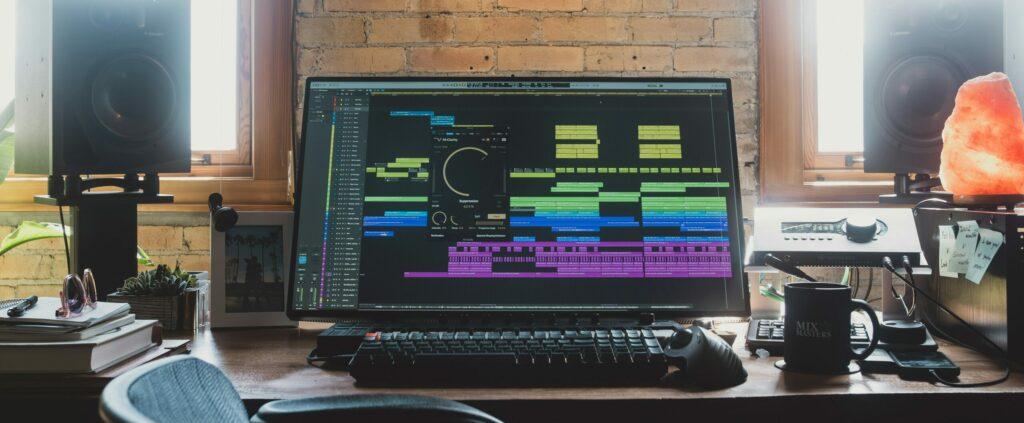Vinyl has experienced a resurgence in recent years, re-emerging as a beloved medium for music enthusiasts. This renewed interest highlights vinyl’s captivating, analog sound and nostalgic value in contrast to the crispness of digital formats. As artists increasingly release music on vinyl, understanding the requirements when mastering for vinyl has become crucial for audio mastering engineers aiming to deliver high-quality records that stand the test of time.
Discover how to produce records that embody the texture, unique character, and timeless charm of analog sound
Do Vinyl Records Offer a Richer Listening Experience?
Have you ever wondered why so many people prefer vinyl records over digital formats? Are vinyl enthusiasts just nostalgic hipsters clinging to vintage culture, or is there more to it? While some might be drawn to the aesthetic or elitism, there are substantial reasons for choosing vinyl over digital formats that explain its recent resurgence in popularity.

Vinyl presents both challenges and rewards, requiring a nuanced approach to bring out the best in the analog format when mastering for vinyl. Listeners cherish vinyl records for the captivating, analog sound, though they come with inherent physical limitations. The grooves degrade over time, especially if playback equipment is poorly maintained, so optimizing every aspect of the production is crucial to ensure longevity and quality.
A short overview of Analog and Digital formats
Digital formats are convenient—they’re immaterial, portable, and efficient. Vinyl records, on the other hand, are tangible; they occupy space, need to be carefully stored, and require more user engagement. This material aspect of vinyl creates what I call “the vinyl condition,” which offers unique benefits to music listening.
Audio mastering for vinyl preserves and enhances these distinctive qualities. Vinyl often produces a warmer, fuller, and deeper sound compared to digital audio. Beyond sound, the vinyl condition adds a wealth of tactile, visual, and even emotional elements that simply aren’t present in digital formats. Vinyl enthusiasts argue that the overall aesthetic experience is broader and more rewarding, with benefits extending beyond pure sound quality.
While both analog and digital formats have their own set of pros and cons, vinyl records offer a more immersive and multidimensional experience. The combination of texture in the sound and the tangible nature of the medium means that vinyl provides a fuller listening experience compared to its digital counterpart. It’s not just about listening—it’s about connecting deeply with the music.
Mastering for Vinyl: Important aspects
To achieve the best possible sound quality, we need a special audio mastering process for vinyl. This requires a thorough understanding of both the benefits and limitations of the medium. Unlike digital formats, vinyl has a limited dynamic range and requires careful attention to groove spacing and texture. While digital formats offer higher dynamic ranges and frequency responses, vinyl introduces harmonic distortion and a characteristic texture that many listeners find appealing. This difference means that mastering engineers must adapt their techniques, managing frequency responses and stereo imaging to fully harness the distinctive qualities of vinyl.

Preparing Your Mix for Vinyl Mastering
Properly preparing your mix for mastering is essential when mastering for vinyl. To achieve a high-quality vinyl record, it’s important to focus on frequency range, dynamic range, and stereo imaging. Additionally, careful attention to tonal balance and avoiding excessive processing will ensure that the mix translates well to the unique characteristics of vinyl.
Using gain staging techiques and ensuring proper headroom is critical, as it allows the mastering engineer to make precise adjustments without introducing unwanted distortion. These preparatory steps help guarantee that the final product maintains its integrity throughout the vinyl cutting process.
Technical Considerations when Mastering for Vinyl
It’s essential to consider the various technical aspects that make vinyl distinct from digital formats. These technical considerations significantly impact the final quality of the record and help preserve the unique characteristics of the vinyl format during playback. Mastering engineers must have a solid grasp of these concepts to produce high-quality vinyl records that meet listener expectations.
Optimal Frequency Range and RIAA Equalization
Vinyl mastering requires careful attention to detail, particularly with frequency manipulation. High frequencies above 15 kHz can lead to harshness and potential groove modulation problems, while sub-bass frequencies below 20 Hz can cause groove modulation problems. To avoid these issues, consider applying a high-pass filter and gently rolling off the high frequencies to create a smooth listening experience.

A grasp of the RIAA equalization process is essential when mastering for vinyl. In the cutting stage, high frequencies are enhanced, while low frequencies are reduced to minimize surface noise and enhance playback quality. On playback, a reverse equalization is applied to bring the sound back into balance. This equalization curve is crucial for ensuring vinyl records sound as intended and faithfully capture the artist’s vision during playback.
Handling Sibilance and Phase Issues
High-frequency sounds, such as sibilance (the «s» sounds in vocals), can cause distortion when cut onto vinyl. De-essing techniques are essential to reduce harshness while preserving vocal clarity. Additionally, maintaining phase coherence, especially in the low end, is crucial to prevent playback distortion that can lead to playback distortion. Carefully managing both sibilance and phase issues will help create a vinyl master that sounds smooth and natural.
Dynamic Range Considerations
You must take careful consideration of dynamic ranges when Mastering for Vinyl, since vinyl cannot handle extreme dynamics as well as digital formats. Excessive dynamics can lead to playback problems, while over-compression results in a flat and lifeless sound. Striking a balance with gentle compression and limiting is key to maintaining the energy of the music while ensuring it remains playable on vinyl. The goal is to keep the sound dynamic but controlled, without overwhelming the physical capabilities of the medium.
Stereo Imaging

Length and Track Sequencing
Bass frequencies also need special attention. Keeping them in mono helps avoid excessive groove movement, which can cause playback issues. A low-frequency mono filter applied below 150 Hz helps maintain consistent lateral groove modulation, reducing the chances of skipping or distortion.
Mastering requires understanding the physical limits of vinyl to determine how much music can fit per side without compromising quality. These physical limitations affect the sound and the integrity of the record over time. Mastering for vinyl involves optimizing groove depth, width, and spacing to achieve the highest sound quality possible.
For a 12-inch record, each side should ideally be kept under 18-20 minutes to maintain audio fidelity. Longer sides require narrower grooves, which can lead to the loss of high frequencies, increased distortion, and reduced overall volume, especially toward the center of the record where groove velocity is lower.
Thoughtful track sequencing can help mitigate these challenges—placing demanding tracks with extensive high-frequency content at the beginning of each side ensures that they are cut in areas with higher groove speed, enhancing playback fidelity and reducing distortion risks. Additionally, keeping quieter or simpler tracks towards the inner grooves can help to maintain consistent quality throughout the entire record.
Collaborating with a Mastering Engineer
Providing your mastering engineer with detailed notes about your mix, including references and insights into your creative vision, is crucial for obtaining the best outcome. Clear communication helps to fully convey your artistic intent while addressing the technical demands of vinyl. Discussing specific details such as sibilance management, low-end stereo imaging, and track sequencing allows the mastering engineer to make decisions that support your vision. Ultimately, vinyl mastering is a collaborative effort that thrives on shared knowledge and open communication.
Quality Control with Vinyl Test Pressings
Test pressings are an essential part of quality control when mastering vinyl. They provide an opportunity to identify and correct issues before mass production, such as surface noise, distortion, or tracking problems. Listening carefully to these test pressings allows mastering engineers to assess the overall sound quality, identify potential problems, and make crucial adjustments to optimize the final product.
At this stage, engineers can identify issues like groove distortion, skips, and frequency imbalances, making it an invaluable part of the production process. Making these necessary adjustments ensures that the final product meets expectations and delivers the best possible listening experience, ensuring the record meets high-quality standards for playback across different systems.

Conclusion
We are dealing with a topic that is between art and science. It requires balancing the technical constraints of the medium to preserve the artistic intent of the music. By understanding vinyl’s properties, preparing your mix with care, and collaborating closely with mastering professionals, you can create a vinyl release that delivers a captivating, immersive listening experience that captures the essence of your music. Mastering for vinyl requires attention to the medium’s specific physical limitations and nuances, ensuring that the final record reflects the warmth and depth characteristic of analog sound.
Embrace the timeless qualities of vinyl and leverage its nostalgic charm to offer your audience an analog experience that resonates deeply—bridging the past and present in a truly meaningful way.
Sobre el autor

Néstor Rausell
Cantante, Músico y Especialista en Marketing de ContenidosNéstor Rausell es el cantante de la banda de Rock "Néstor Rausell y Los Impostores". Trabaja en MasteringBOX como especialista en marketing.
Deja un comentario
Inicia sesión para comentar


